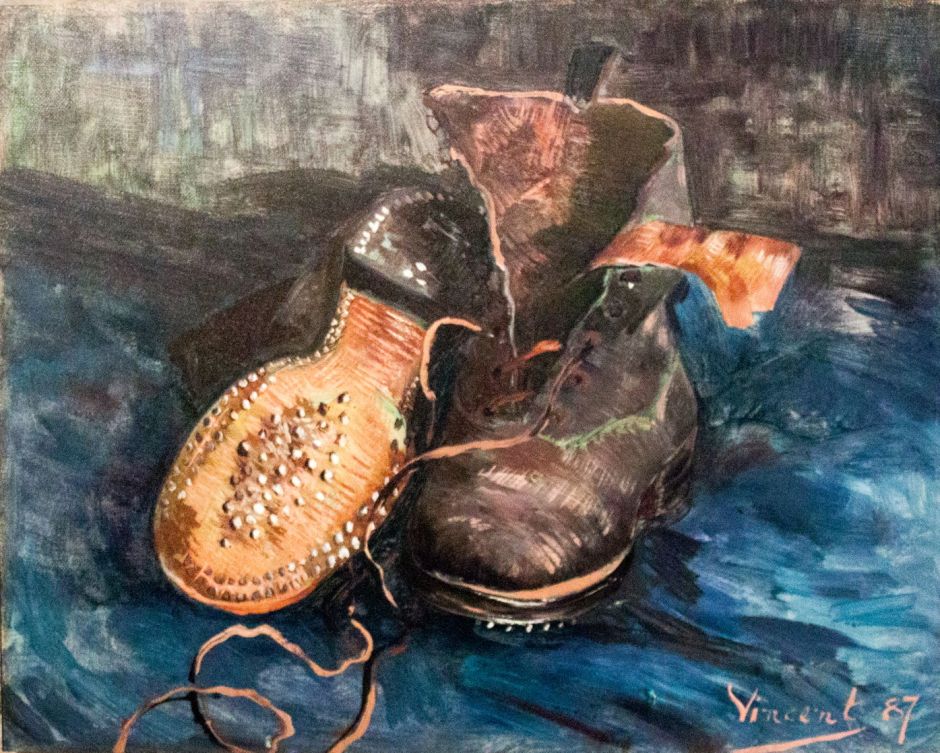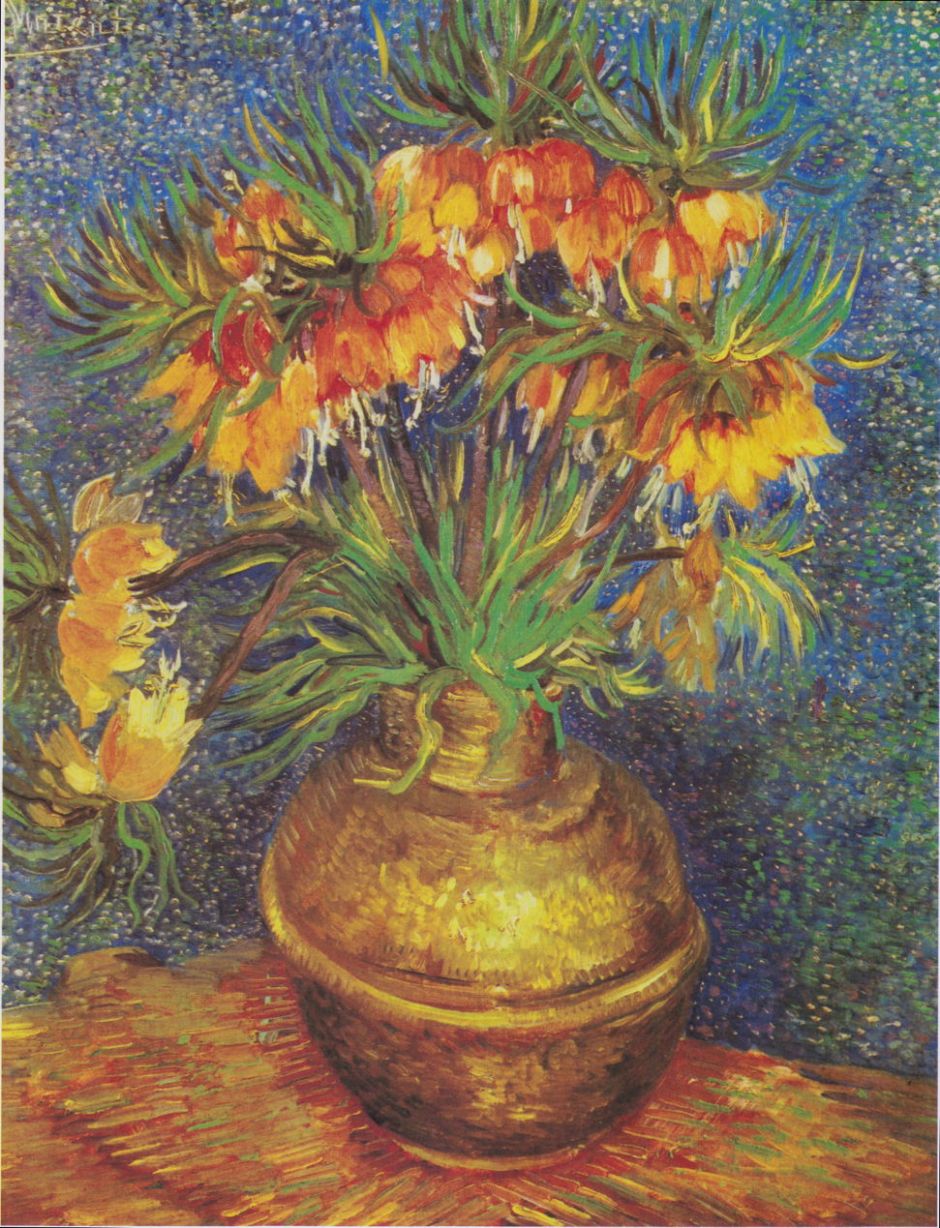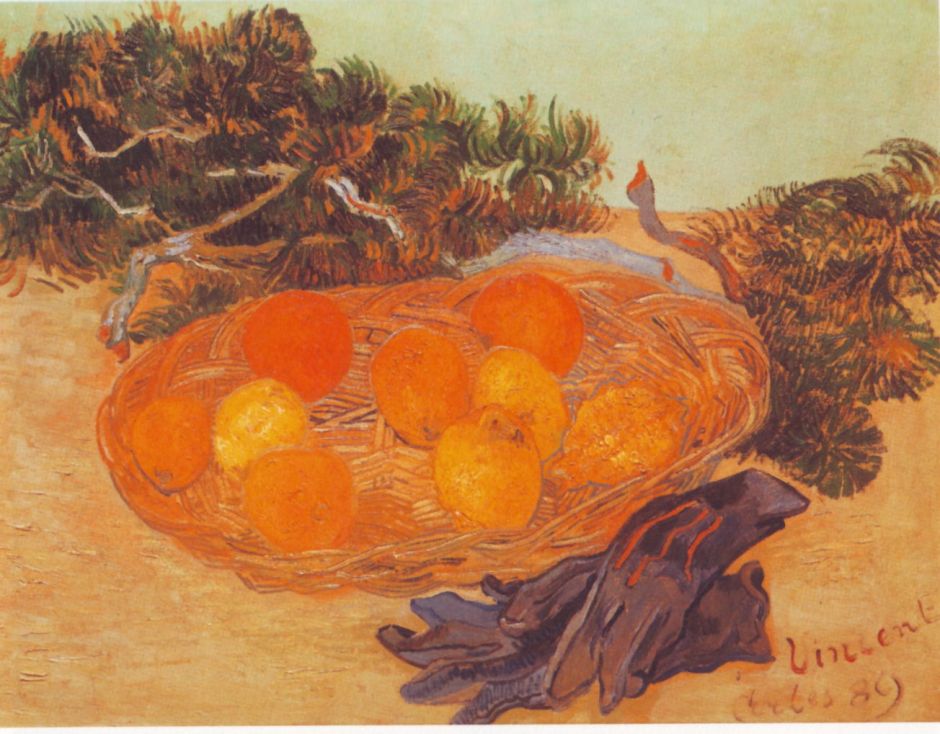After Cézanne, the other great Post-Impressionist painter of still lifes was Vincent van Gogh (1853–1890).

Van Gogh painted this Still Life with Two Sacks and a Bottle in November 1884 when he was living in Nuenen, in the Netherlands. This is one of the earlier examples from the many he made in his initial exploration of the genre during 1884-85. Most feature sombre earth colours and show everyday objects, here two sacks, a corked bottle, and framed mirror, against a found background.

The following year, this Still Life with Bible (1885) continues the sombre look, with an even narrower chromatic range, in which the only marked variation is in some of the patches of colour on the pages of the open Bible.
The Bible has been opened at the book of Isaiah, it’s thought at chapter 53, which prophesies the coming of the Messiah. This is most probably a response to the sudden death of van Gogh’s father in March 1885, and the Bible is read as symbolising his father’s strict faith, in contrast with the book beside it, representing the artist with Émile Zola’s novel La Joie de Vivre (The Joy of Living).

Although Vincent discussed his dark and restricted palette in letters with his brother Theo, who had been unable to sell any of these works, broadening his chromatic range didn’t bring any change to the gloom. This is seen in his Still Life with Potatoes, which he painted in September 1885, which does at least explore different material textures.
In March 1886, Vincent moved to live with his brother Theo in Montmartre, and his still life paintings started to change.

In the autumn/fall of 1886, he painted these Cineraria flowers, with their highlights starting to shine through at last, and a wider palette reflecting his aim for “intense colours, not grey harmony”. Cineraria flowers are in the sunflower family, a portent of future paintings, perhaps.

In addition to many floral still lifes, van Gogh painted some more unusual objects. A short series of footwear included A Pair of Shoes (1886), now in the Van Gogh Museum. He bought these working boots secondhand at a flea market, and wore them on a long walk in the rain to get them looking just right. It has been suggested that this was intended as a tribute to workers.

Early the following year, he painted another Pair of Shoes showing the many hobnails in their sole, which also has marked wear at the toe and the heel. This is a digital reconstruction of the original colours made for the Baltimore Museum of Art, which gives a more accurate idea of his extending palette at the time.

The influence of the developing Divisionist movement, and Paul Signac in particular, is seen in the background of van Gogh’s Imperial Crown Fritillaries in a Copper Vase, also from 1887. Using more raw colours straight from the tube, this has now attained the brilliant colour more typical of his mature painting. These flower in the Spring, and were popular at the time in both France and the Netherlands.

Grapes, Lemons, Pears, and Apples, from the same year, pushes further in colour, and is entirely composed of brushstrokes arranged systematically. It’s also notable for his use of cadmium yellow, although he normally preferred chrome yellow.

That year also saw van Gogh’s first group of paintings of sunflowers. Four Withered Sunflowers (1887) is the last of the four he made that summer, showing the flowers gone to seed. Two of the others were owned by Paul Gauguin, who later sold them to raise money for his travel to the Pacific.

In December that year, he painted this Still Life with Plaster Statuette, a Rose and Two Novels, which anticipates Cézanne’s use of a plaster cherub in his still lifes around 1895. Van Gogh has applied his paint in thick strokes, carefully organised according to the object. The two books shown are among his favourites: Guy de Maupassant’s Bel-Ami (‘Dear Friend’), his second novel published in 1885, and Edmond and Jules de Goncourt’s Germinie Lacerteux, published in 1865, which is about a peasant girl who succumbs to nymphomania. Read what you will into his selection!
When van Gogh was in Arles in the summer of 1888, he painted a second series of floral still lifes featuring sunflowers, this time several bouquets in a vase, shown against a plain background whose colour differs between paintings. Four versions formed the original series, and he painted three repetitions. These are among his most famous paintings, indeed some of the most famous works in Western art.

Still Life: Vase with Twelve Sunflowers (August 1888) is known as the third version, against a pale blue-green background, and is now in the Neue Pinakothek in Munich.

Perhaps the most popular with visitors is the National Gallery’s Still Life: Vase with 15 Sunflowers, known as the fourth version, which has the most remarkable background of them all, with a unique metallic sheen.
Tragically, the second version was in a private collection in Japan which was destroyed by allied bombing in 1945.

When he moved to Arles in May 1888, van Gogh painted a series of works intended to decorate his room there, including Van Gogh’s Chair, which he completed in November or December 1888. This unusual still life includes one of his decorated pipes and a pouch of tobacco, with an onion box at the left edge on which the artist has signed the painting. Simple and down-to-earth, a great deal has been written speculating as to its symbolism.

Shortly after returning to the Yellow House in Arles after his acute crisis around Christmas 1888, van Gogh painted this Still Life of Oranges and Lemons with Blue Gloves (January 1889). This is an unusual composition which is dominated by oranges and yellows, with contrasting dark gloves and green branches of foliage behind.
Vincent van Gogh painted remarkably few still lifes during his troubled period towards the end of his life. Landscapes dominated his output during his stay in hospital at Saint-Rémy, although shortly before he left in May 1890, he painted some more, including two showing iris flowers.

Irises (May 1890) is one of these, whose composition revisits his second sunflower series. He painted a few more floral still lifes when he was living in Auvers-sur-Oise shortly before his death. The iris flower is commonly associated with wisdom and hope.
Reference
Wikipedia’s superb detailed analyses of his still life paintings can be accessed from its main article on the artist.

